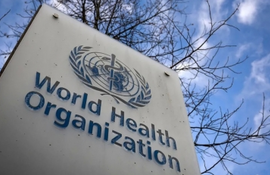

The World Health Organisation
<p>
India has strongly refuted the World Health Organisation&#39;s use of a statistically unsound method of data collection to arrive at an exaggerated estimate for the number of deaths due to Covid in the country.&nbsp;</p>
<p>
&quot;India has consistently questioned WHO&#39;s own admission that data in respect of 17 Indian states was obtained from some websites and media reports and was used in their mathematical model,&quot; the Union Health Ministry said in a statement.</p>
<p>
&quot;This reflects a statistically unsound and scientifically questionable methodology of data collection for making excess mortality projections in case of India,&quot; the statement added.</p>
<p>
The Health Ministry reiterated that India has an &quot;extremely robust&quot; system of births and deaths registration and pointed out that the WHO&#39;s system of data collection was &quot;statistically unsound and scientifically questionable&quot;.&nbsp;</p>
<p>
The WHO stated in a report released on Thursday that between January 2020 and December 2021, there were 47 lakh &quot;excess&quot; Covid deaths in India. The number is nearly 10 times the official figure of 4.8 lakh. The global figure, according to the report, was 15 million which is more than twice the official figure of 6 million.</p>
<p>
&quot;Despite India&#39;s objection to the process, methodology and outcome of this modelling exercise, WHO has released the excess mortality estimates without adequately addressing India&#39;s concerns,&quot; the ministry said.</p>
<p>
In 2020, India recorded 4,74,806 deaths as excess — meaning over and above normal — under the Civil Registration System.</p>
<p>
&quot;Throughout the process of dialogue, engagement and communication, WHO has projected different excess mortality figures for India citing multiple models, which itself raises questions on the validity and robustness of the models used,&quot; the statement read.</p>
<p>
The ministry pointed out that India had shared the data from the Civil Registration System 2020 with the WHO for preparation of the excess mortality report. However, &ldquo;WHO for reasons best known to them conveniently chose to ignore the available data submitted by India and published the excess mortality estimates for which the methodology, source of data, and the outcomes has been consistently questioned by India,&quot; the ministry added.</p>
<p>
In its report WHO said, &quot;Excess mortality is calculated as the difference between the number of deaths that have occurred and the number that would be expected in the absence of the pandemic based on data from earlier years&quot;.</p>
<p>
&quot;Excess mortality includes deaths associated with COVID-19 directly (due to the disease) or indirectly (due to the pandemic&#39;s impact on health systems and society). Deaths linked indirectly to COVID-19 are attributable to other health conditions for which people were unable to access prevention and treatment because health systems were overburdened by the pandemic,&quot; the report explained.</p>
<p>
WHO also said they chose the mathematical model as many countries &quot;still lack capacity for reliable mortality surveillance and therefore do not collect and generate the data needed to calculate excess mortality&quot;.</p>
<p>
<strong>Also read: <a href="https://www.indianarrative.com/health-news/omicron-is-intrinsically-as-severe-as-previous-covid-variants-says-new-study-168958.html">Omicron is intrinsically as severe as previous COVID variants, says new study</a></strong></p>
Union Minister of Coal and Mines G Kishan Reddy on Tuesday held an inter-ministerial meeting…
India's largest automobile in-plant railway siding at Maruti Suzuki's Manesar facility started operation on Tuesday,…
Google on Tuesday unveiled its Safety Charter for India's AI-led transformation, at the "Safer with…
The human rights organisation of the Baloch National Movement (BNM), Paank, has published its most…
The Israel Defence Forces (IDF) on Tuesday claimed that it has killed Iran's senior-most military…
Amid escalating conflict between Iran and Israel, the Ministry of External Affairs (MEA) on Tuesday…